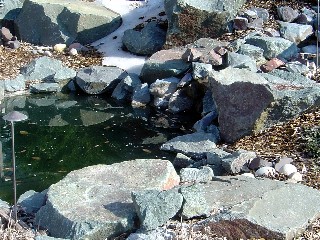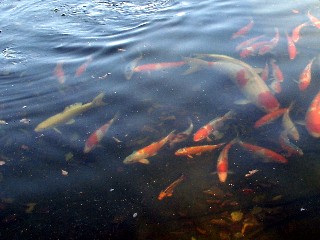

Fall, the season when everything seems to drop: leaves, water temperatures, and don't forget the worst one, immune systems. Koi are Poikilothermic, which means cold blooded. Their body temperature matches the water temperature. You will notice that when the water gets below 60 degrees, your Koi will slow way down. This is a critical time period. Watch your Koi for any signs of distress or any complications with parasites. If you have an indoor over-wintering tank, now would be a good time to take your Koi in for the winter. You do not want to wait for the water temperatures to get too low, otherwise you'll hurt your Koi with a big temperature change. Make sure that your over-wintering tank is covered, Koi seem to like to jump whenever they get new surroundings.
When the temperature starts to fall, switch to a Koi food that has a high percentage of wheat germ and a low percentage of protein. This mixture will be easy for your Koi to digest and will help clean out their digestive system. Stop feeding your Koi altogether when the temperature gets below 50 degrees Fahrenheit. They may look hungry, but if you feed them, the food in their stomachs will rot and they will suffer.
Keep your pond absolutely clean in the fall. I will write it again, KEEP YOUR POND CLEAN. That means immediately remove leaves and other debris out of your pond. If you leave this stuff in your pond throughout the winter, it will start to decompose and it will release toxic gases. It will also harbor anaerobic bacteria, they also produce a toxic gas, hydrogen sulfide.
Back to Koi Care.